5 Ways to Create a Gorgeous Garden Cheaply on a Budget
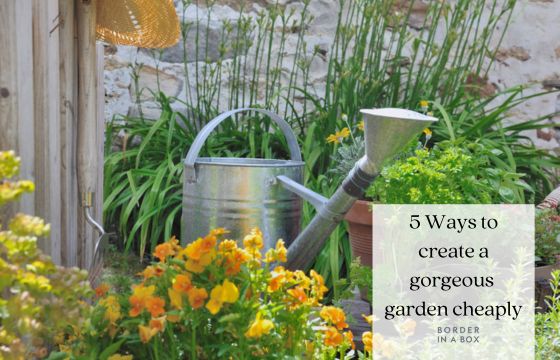
If you’re looking to create a gorgeous garden cheaply on a budget, this is how I started my first garden. I had zero money to buy luxuries such as plants, so I had to be savvy with my cash and I filled my garden using plant cuttings, bulbs and ‘plant donations’ from friends.
Your garden might not look like a Chelsea Show Garden, but who cares – the process of planting and growing is far more valuable than any medal, and I would more rather have a garden filled with flowers than looking at a boring patch of turf and wooden fence.
So, here’s my top tips to help you create a gorgeous garden on a budget.
Grow from Seed
The satisfaction of sowing and growing flowers (and veggies) from seed is immense – I would recommend you try it. Start with a flower you love – personally my favourites are Cosmos which are really simple, and you will get loads of flowers right up to the first frosts of winter. So, you get a lot of ‘bang for your buck’.
- Purchase seed packs, which are much cheaper than buying mature plants. You can start them indoors and transplant them to pots and borders outside when the risk of frosts has passed, and the seedlings are maturing.
- Bulbs: traditional spring favourites include flowers such as crocus, daffodils and tulips, but you can grow them all year-round and will return each year. So, they provide a good return on your investment. If the squirrels don’t dig them up!
Download my free bulb guide here –bulbs for year round colour
- Find local seed swaps or online groups where gardeners exchange seeds/seedlings for free.
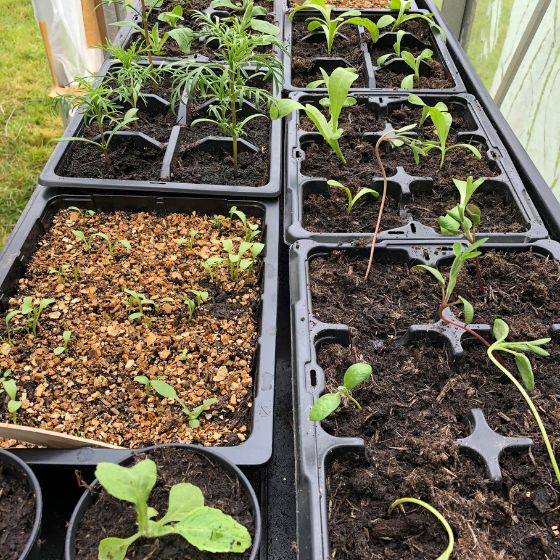
Take Cuttings and Divisions
- Take cuttings from existing plants. Many plants, like shrubs, succulents and herbs, can be propagated this way.
The best time to take cuttings is in late spring or early summer when the plant is actively growing. However, you can take cuttings at any time of year. If there’s a specific plant you want, I would double check the timings to improve your success.
Here is a Salvia cutting – simply, use some sharp scissors and cut three stems from the host plant (avoid stems with flowers or buds), and remove the lower leaves, then pop into a pot of compost (I used a pencil to make the hole). Water and leave to grow. Don’t over water, but don’t let the compost dry out either. Keep out of direct sunlight as it may scorch the leaves.

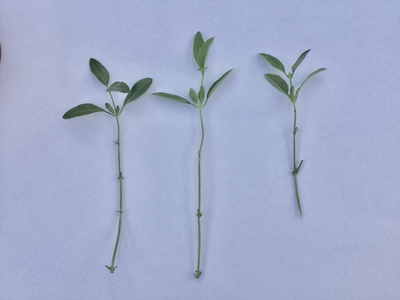
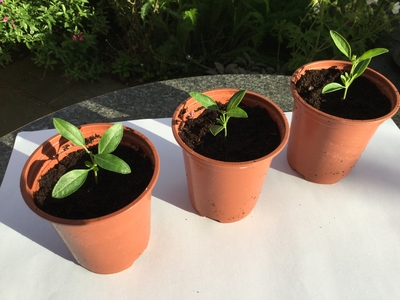
- Divide perennials like hostas, daylilies, and irises. This not only gives you more plants but also helps maintain plant health.
Plant Sales and Clearance
- Garden centres: Often have ‘clearance bays’ which is where end-of-season plants go along with sickly specimens – you can pick up a bargain, but it’s a risk on whether you can nurse the plant back to good health.
Another option is to buy juvenile plants. You may find at your local garden centre that they have ‘basket plants’ which are in 9cm pots. You may find a similar plant in the main nursery that is in a 2-litre pot that is 2 or 3 times the price. It’s a great way to stretch the budget. If you’re creating a border from scratch, I would advise buying a mixture of juvenile and mature plants to help the garden border feel more established.
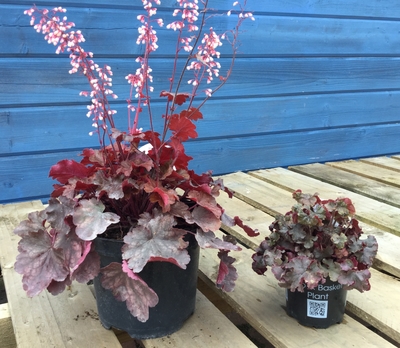
- Community Plant Sales: Find out where your local gardening club meet as they may have plants available or to share plus they may have discount codes for retailers. There’s also the added bonus of meeting like-minded people and make friends.
- Online retailers: You may find some of the big seed and plant retailers have sales. These are usually to gain new customers, but you can get some real bargains. It may mean the plants are baby seedlings and will need more nurturing to grow them on, but it can be worth doing but only if they’re plants you love! Check the size of the plants before purchasing, you might be buying a bargain, but if it means nurturing them for a year before they’re big enough to plant out, you need to consider how to take care of them.
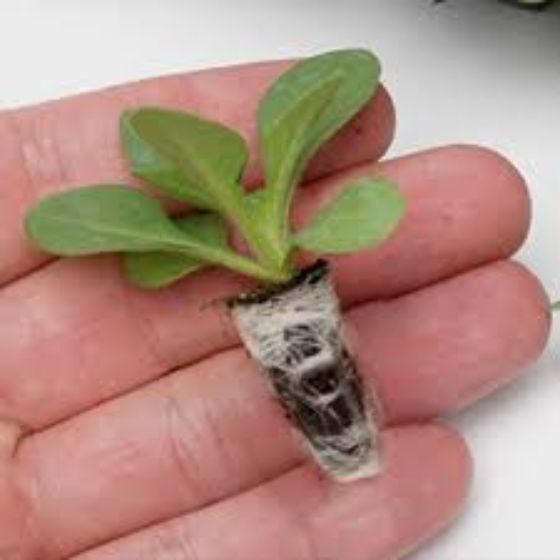
Free Resources
- Friends and Neighbours: Ask friends and neighbours if they have extra plants or cuttings they can share or swap.
- Online Marketplaces and forums: Look for free plants on online marketplaces such as Facebook. There are plenty of gardening groups on Facebook too, which is full of tips, ideas and ‘how to’s’ which can be invaluable when starting your garden.
- Seed Saving: Collect seeds from your own garden or from friends’ gardens. This is a cost-effective way to grow plants year after year. I did this with a friend’s beautiful Hollyhocks, and I totally forgot about planting them in my garden – so I had a fabulous surprise when they grew the following year!
- Nigella (commonly known as Love in a Mist – photo below) has pretty seed heads – ideal for winter wreath making, but they will self seed which means plenty of free flowers the following year!
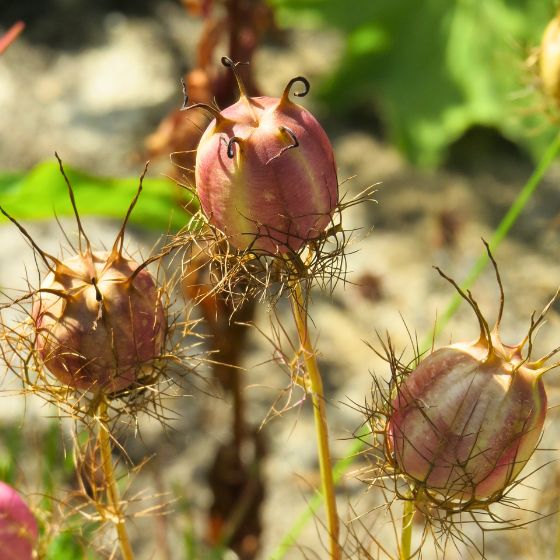
Plant Perennials & Evergreens
- Choose perennial plants as they come back year after year, saving you money in the long run compared to annuals that need to be grown each season. Evergreen shrubs such as Pittosporum will remain in leaf all year round, and they have so many colours and leaf shapes and sizes, you should be able to choose a fabulous variety for your garden. The photo below is the ‘Silver Queen’ variety and I’ve shown what it looks like in different pots and backgrounds, so you can see how different it looks.
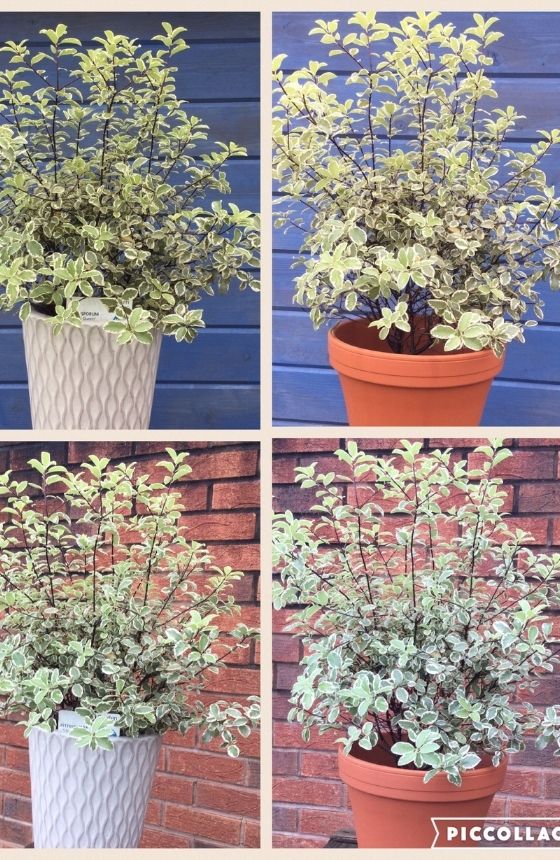
I hope you found these ideas useful, and I’ve shown you how you can fill your garden with beautiful plants without investing a lot of money, but if you need any assistance, just ask and I’ll be happy to help.
 Free Delivery
Free Delivery Upgrade to 24 Hour Tracked Delivery
Upgrade to 24 Hour Tracked Delivery

